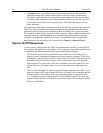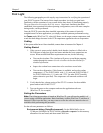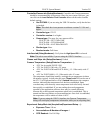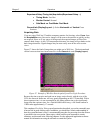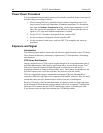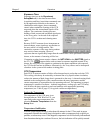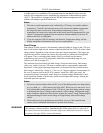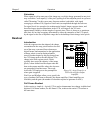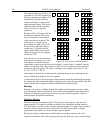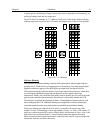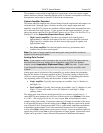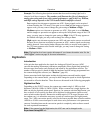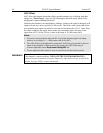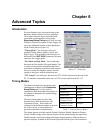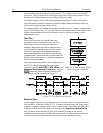
Chapter 5 Operation 49
49
Saturation
When signal levels in some part of the image are very high, charge generated in one pixel
may exceed the "well capacity" of the pixel, spilling over into adjacent pixels in a process
called "blooming." In this case a more frequent readout is advisable, with signal
averaging to enhance S/N (Signal-to-Noise ratio) accomplished through the software.
For signal levels low enough to be readout-noise limited, longer exposure times, and
therefore longer signal accumulation in the CCD, will improve the S/N ratio
approximately linearly with the length of exposure time. There is, however, a maximum
time limit for on-chip averaging, determined by either the saturation of the CCD pixels
by the signal or the loss of dynamic range due to the buildup of dark charge in the pixels
Readout
Introduction
After the exposure time has elapsed, the charge
accumulated in the array pixels needs to be read
out of the array, converted from electrons to
digital format, and transmitted to the application
software where it can be displayed and/or
stored. Readout begins by moving charge from
the CCD image area to the shift register. The
charge in the shift register pixels, which
typically have twice the capacity of the image
pixels, is then shifted into the output node and
then to the output amplifier where the electrons
are grouped as electrons/count. This result
leaves the CCD and goes to the preamplifier
where gain is applied.
WinView and WinSpec allow you to specify the
Figure 18. Array Terms for a
CCD with a Single Output
Amplifier
type of readout (full frame or binned), the output amplifier (if dual amplifiers are
available), and the gain (the number of electrons required to generate an ADU).
Full Frame Readout
In this section, a simple 6 4 pixel CCD is used to demonstrate how charge is shifted and
digitized. Full frame readout, for full frame CCDs, reads out the entire CCD surface at
the same time.




